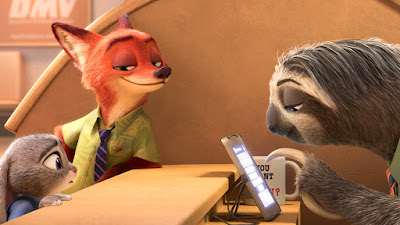2016 — 137 minutes — Drama
Director: Kenneth Lonergan
Country: United States
IMDB: 8.5
Metacritic: 96
RT: 97%
EpicEnthusiast's Rating: A
Watch this movie if you enjoy:
- dramas
- Casey Affleck
- small town stories/New England
- Michelle Williams
Avoid this movie if you dislike:
- profanity
- family dramas
(spoilers below)
Manchester by the Sea is the type of film you wish would keep going, but you couldn't possibly ask anything more of.
The story revolves around Casey Affleck's
character, Lee Chandler, a Boston handyman that seems dead inside. He moves
from building to building unclogging toilets, shoveling snow and painting walls
with little to no positive emotion and eventually receives a phone call that
forces him to drive back up to his hometown.
We find out that Chandler is dead
inside much before we find out why he's so reluctant to go back to
Manchester-by-the-Sea (a real town on the northern coast of Massachusetts,
population roughly 5,000), but the circumstances more than serve as a proper
build-up to the unspeakable tragedy he can't get past.
Lee's brother Joe, played by Kyle Chandler,
has suddenly passed away and he's called on Lee to be the guardian of his
16-year-old son, Patrick, in his will. The problem is they never discussed it
and as director/writer Kenneth Lonergan (You Can Count on Me, Margaret) made clear in
the opening minutes of the film, Lee is far from fit to be a parent. Not like
he used to be.
| Casey Affleck (right) as Lee Chandler and Kyle Chandler as Joe Chandler. |
Matt Damon, a producer of the film, was
originally set to direct and star as Lee, and despite what he brings to the
screen, the story benefitted greatly from his scheduling conflicts (The
Martian). It's tough to imagine Damon in such a hard-hitting,
small-town role that demands so much. He's a far cry from the young, feisty
Boston janitor in Good Will
Hunting.
Affleck, however, plays Lee to perfection. His
scruffy hair, worn-out t-shirts and bar fights are fitting because they're
real. When Lonergan finally gives us the source of his grief in a somehow
seamless, gut-wrenching flashback, it's heartbreaking not only in nature, but
because Lee was content just prior. In an earlier flashback of the same night,
we see him drunk, laughing and messing around with friends in the basement.
It's one of the few times in the film we see Lee smiling.
The contrast of what happens later in the
evening is dangerously sharp, and it's Affleck that makes it so devastating.
Lonergan said, "People find ways to live with tragedy. But some people
don't. And maybe they deserve to get a movie about them, too." They
certainly do, and Affleck follows up noteworthy roles in The Assassination of Jesse James
by the Coward Robert Ford, Gone
Baby Gone, and Out
of the Furnace with an
unquestioned career best.
His Oscar-worthy performance dominates the
screen and carries you seamlessly through the story. The entire film is
seamless.
| Lee (Casey Affleck) with his nephew Patrick (Lucas Hedges). |
That's why the plot details don't matter. You
trust Lonergan as a storyteller very early on and know that whatever happens to
Lee and Patrick will be authentic. It might be troubling and it might be
painful, but real life often is. Manchester
by the Sea is about real
life.
So much so that arguably its most impactful
scene takes place in a beat-up old alleyway of Manchester-by-the-Sea. While Lee
is still in town taking care of funereal arrangements and living with Patrick,
he runs into his ex-wife Randi, played by Michelle Williams. Randi is walking
with her friend and newborn son and stops Lee to talk.
She "doesn't have anything big to
say," but wants to apologize for things she said to him after the
accident. She admits that, despite a new husband and a new child, she loves
Lee. "Maybe she shouldn't say that," but Lee tells her she's allowed
to say that. He can't stay and talk and he can't have lunch with her in the
future, but she's allowed to say that.
| Michelle Williams as Randi Chandler speaking with Lee. |
It's the kind of story that can only take
place in a town like Manchester-by-the-Sea. A story that's too big for Hollywood.
Lonergan has absolute control over it and in just his third feature film, he's
created a masterpiece.
The scenes that make it so touching are the
ones that maybe even he wasn't planning on. The scenes where Patrick tells Lee
"Let's just go" and Lee thinks he means let's drive away and not go
see his dead father inside the hospital, so he floors it while Patrick is
getting out of the car. They shout, they tell each other off and they
apologize.
They co-exist in a town, in a life, that is
severely messed up. So messed up that the every-day moviegoer can relate to it.
It's not often that a filmmaker is so brutally honest with the audience.
— EE
As of December 21, 2016, Manchester by the Sea is in theaters everywhere.
— EE
As of December 21, 2016, Manchester by the Sea is in theaters everywhere.



















